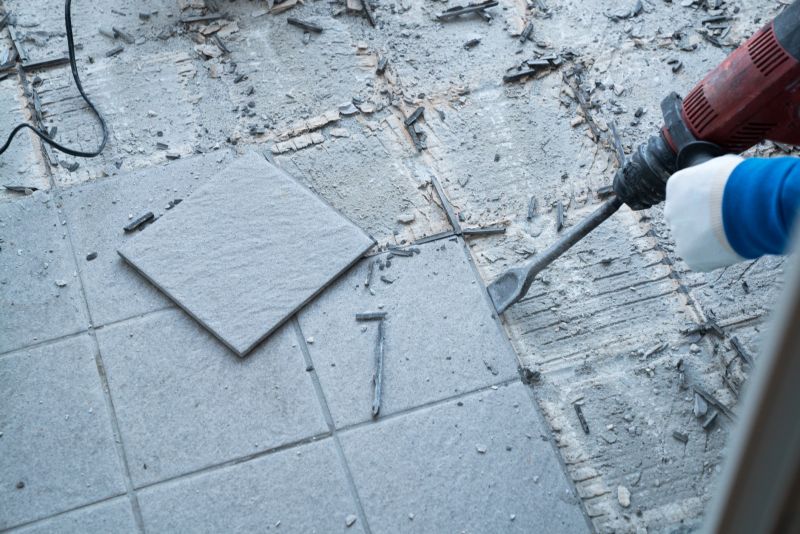Ultimate Selection Of Tile Removal And Stripping Products
Find out which top-rated tools and accessories are essential for achieving smooth tile removal and surface stripping results.
 Removing tiles and stripping surfaces can be a challenging task that requires the right tools to ensure safety and efficiency. A variety of products are available to assist with this process, ranging from manual hand tools to powered equipment. Selecting the appropriate product depends on the scope of the project, the type of tiles or surface material, and personal comfort with different tools. Proper preparation, including protective gear and surface assessment, can make the removal process smoother and help prevent damage to underlying surfaces.
Removing tiles and stripping surfaces can be a challenging task that requires the right tools to ensure safety and efficiency. A variety of products are available to assist with this process, ranging from manual hand tools to powered equipment. Selecting the appropriate product depends on the scope of the project, the type of tiles or surface material, and personal comfort with different tools. Proper preparation, including protective gear and surface assessment, can make the removal process smoother and help prevent damage to underlying surfaces.
Top Overall Option
Heavy-Duty Electric Tile Scraper
A versatile electric tile scraper offers adjustable power settings and ergonomic design, making it suitable for various tile removal projects. Its durable blade and easy maneuverability help users efficiently strip tiles and adhesive residues with less manual effort, providing a practical solution for both DIY enthusiasts and professionals.
Types of Products For Tile Removal And Strippings
Manual Tile Chisels
Hand tools designed to carefully pry up tiles and break adhesive bonds, ideal for small or delicate projects.
Floor Scrapers
Long-handled tools with wide blades for removing large sections of tiles and adhesive from floors efficiently.
Oscillating Multi-Tools
Power tools equipped with various blades and attachments suitable for detailed or tight space tile removal tasks.
Rotary Hammers
Heavy-duty power tools fitted with chisel bits for breaking through tough tiles and mortar layers.
Electric Scrapers
Powered devices with oscillating blades designed specifically for stripping tiles and adhesives quickly.
Heat Guns
Tools that soften adhesive residues with heat, making removal easier without damaging surfaces.
Hammer and Pry Bars
Traditional tools used to carefully lift and pry up tiles and stubborn adhesive sections.
Diamond Blades
Specialized blades for cutting through tough materials like concrete or thick tile layers during removal.
Plastic and Rubber Scrapers
Gentle tools suitable for removing adhesive or grout from delicate surfaces without scratches.
Adhesive Removal Solvents
Chemical agents used to soften or dissolve adhesive residues for easier removal.
Popular Choices
Powerful and efficient, these tools are trending for their ability to quickly strip tiles and adhesives with minimal manual effort.
Widely used for large-scale projects, these scrapers help remove extensive tile sections and adhesive layers.
Versatile and popular for detail work, these tools can handle various removal tasks with different attachments.
Favored for their ability to loosen adhesives without damaging underlying surfaces, especially in renovation projects.
Trusted for heavy-duty demolition, these tools are commonly used in commercial or extensive residential projects.
Popular for small jobs and detailed work, these tools provide control and precision when lifting tiles.
Trending for their effectiveness in dissolving stubborn residues, facilitating cleaner removal processes.
A go-to choice for delicate surfaces, these tools prevent scratching while removing adhesives and grout.
Essential for cutting through tough materials during removal, these blades are favored for their durability.
Increasing in popularity for their speed and ease of use in stripping tiles and adhesives.
Manual tools such as putty knives and chisels are often used for small-scale or detail work. For larger areas, specialized tile removal scrapers and floor scrapers are designed to handle more extensive jobs. Power tools like oscillating multi-tools, rotary hammers, and electric scrapers can significantly reduce effort and time, especially when dealing with stubborn adhesive residues or thick layers of old tiles. Safety precautions, including eye protection and dust masks, are essential during removal to minimize debris and dust inhalation.
In addition to the core removal tools, there are accessories and attachments tailored for specific surfaces and tile types. For instance, carbide-tipped blades are effective for cutting through tough materials, while plastic or rubber scrapers are suitable for delicate surfaces. Choosing the right product involves considering the surface underneath, the type of tiles, and the removal method to ensure a clean, damage-free process. Proper disposal of old tiles and adhesive residues is also an important part of the project planning.
Overall, investing in quality tools designed for tile removal and stripping can lead to more efficient work and better results. Whether tackling a small bathroom update or a large commercial renovation, understanding the different product options and their appropriate applications can help achieve a successful outcome with less frustration.
Key Buying Considerations
- Project scale and surface area to determine whether manual or powered tools are appropriate.
- Type of tiles and underlying surfaces to select gentle or heavy-duty tools accordingly.
- Frequency of use – occasional DIY projects may require different tools compared to professional use.
- Power source preferences, such as corded versus cordless options for portability.
- Blade and attachment compatibility with existing tools or brands.
- Ease of handling and ergonomic design to reduce fatigue during extended use.
- Availability of replacement parts and accessories for long-term maintenance.
- Safety features such as dust collection, guards, and anti-vibration handles.
- Dust and debris management features to maintain a cleaner workspace.
- Chemical compatibility if using adhesive removers or solvents.
- Budget constraints balanced with the quality and durability of the product.
- User reviews and ratings to gauge real-world performance and reliability.
- Warranty or customer support options for peace of mind.
- Environmental considerations, including noise levels and dust generation.
- Compatibility with other tools in your toolkit for versatile use.
This content contains affiliate links. We may earn a commission if you purchase through these links, at no additional cost to you.
